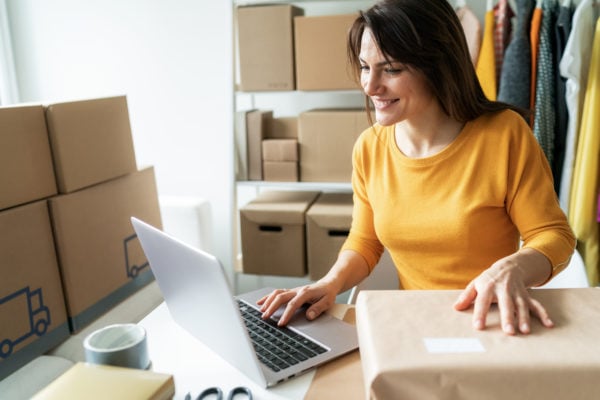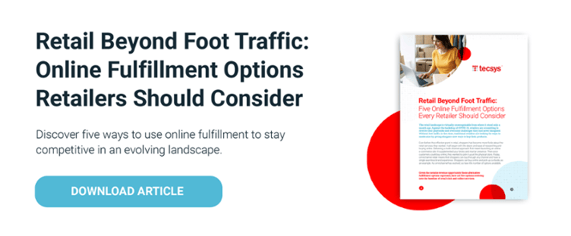Retail Doesn’t Die When Stores Shut Down
The retail landscape is virtually unrecognizable from where it stood only a month ago. Against the backdrop of COVID-19, retailers are scrambling to rewrite their playbooks and overcome challenges they had never imagined. Without foot traffic in the store, traditional retailers are looking for ways to modernize by giving shoppers new ways to buy their products.
Even before this inflection point in retail, shoppers had become more fickle about the retail services they wanted. It all began with the desire and ease of researching and buying online. Delivering a multi-channel approach first meant launching an online e-commerce site. It supplemented your bricks and mortar presence. Then once customers could buy online, they wanted to pick it up at the physical store. Today, omnichannel retail means that shoppers can buy through any channel and have a single seamless brand experience. Shoppers can buy online and pick up curbside, as an example. As omnichannel evolved, so have the number of options available.
Given the notable revenue opportunity these alternative fulfillment options represent, here are five options evolving into the baseline of retail click and collect services.
Different Fulfillment Options Retailers Can Offer When Storefronts are Closed
1. Drive Through and Curbside Pickup
Drive through and curbside pickup options are an interesting new service and expected to be become a $35 billion channel in 2020, according to Forbes. Target and Walmart are leaders in curbside pickup and consumers will inevitably start to expect this same kind of service from other retailer chains. The challenge of this retail click and collect option can be a higher infrastructure investment (dedicated space for cars to stop for a pickup, process mapping). However, don’t let this stop you from innovating. Pickup lockers might be a solution worth considering in this instance.
2. Remote Pickup
Remote retail click and collect is a twist on the standard collection point. This option includes client pickup points which are more convenient for certain shoppers. For example, a trend in U.K. markets is the use of convenience (corner) stores as pickup points. Other options may include UPS, FedEx or Postal Stations as designated pickup points. This option provides a convenience experience which customers can associate with the retailer’s brand. Remote locations may be a good way to differentiate your retail brand given the low number of retailers offering this choice.
3. Reserve and Collect
Reserve and collect is perhaps one of the earliest forms of retail click and collect. Although easy to implement, it can have less than desired effects for retailers. Reserve and collect is challenged with a high level of failed collections. This can have the negative effect of tying up a retailer’s inventory, when a client reserves, but fails to show up to purchase and collect the item.
4. Ship from Store
Ship from store is an excellent way to control in-store inventory levels, maintain high inventory turnover and provide revenue support for a brand’s store locations. It also offers the positive brand experience of giving the customer the broadest possible selection of options. Shipping from store may be among the most efficient and cost-effective methods of getting an item to a shopper.
Opponents argue that it means retailers are eliminating low wage warehouse workers from the distribution centers. Instead, they are replacing them with expensive sales agents in the field. This is where retailers should consider down time, where their services can be repurposed for picking, staging and packing.
5. Drop Ship
Direct drop shipment from the manufacturer to the consumer bypasses the in-store requirement altogether and builds a parallel and borderless revenue stream. This solution may be an effective means of reducing the need for a retailer to hold large inventory positions. However, it can also become a costly option if consumer orders must be split for multiple shipments (and shipping costs) from different manufacturers. Keep in mind this has the potential to erode a cohesive brand experience that shoppers expect. When a customer orders a set of items, there is typically an expectation all the items will be shipped together and at the same time. Consumers don’t want to have to track individual items when they were ordered as one cluster.
Are You Ready to Offer Multiple Fulfillment Options?
Even as lockdowns are lifted and social distancing measures are relaxed, the retail industry will not roll back to the way it was. Late adopters have been forced into online shopping and are likely experiencing the conveniences of pickup and delivery options. In-store browsing may not be as popular as it once was, so it is incumbent on retailers to keep up with the fast evolving omnichannel retail industry and provide your customers with what they demand.
Which of the above five retail fulfillment methods have you considered to boost revenues to offset in-store shopping lag?
Editors note: This post was originally published here and has been updated for accuracy and relevancy.




